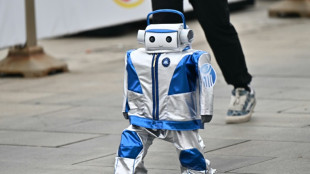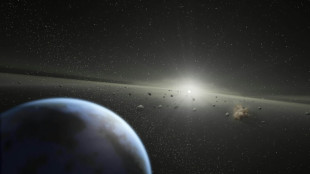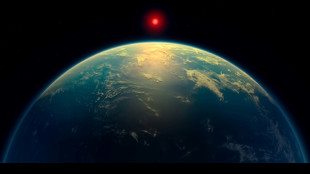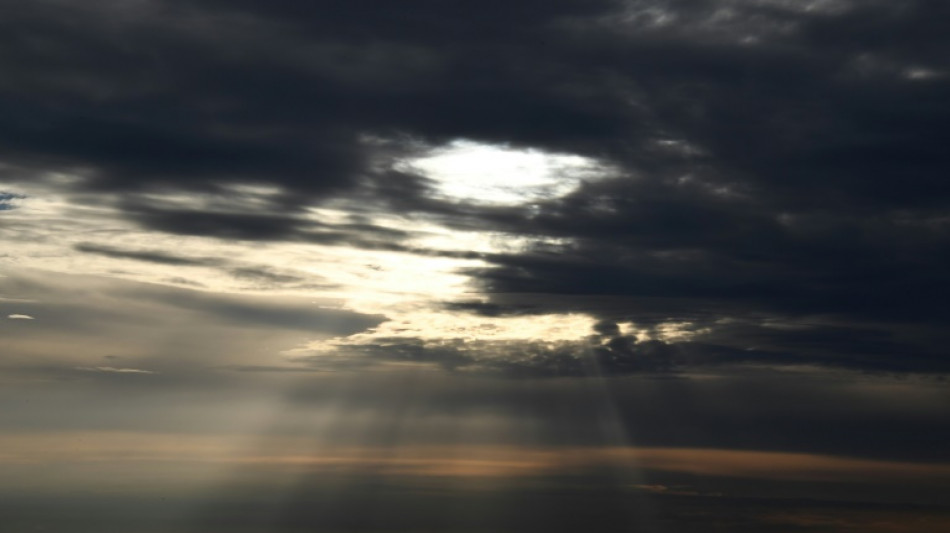
-
 Migrant's expulsion puts Washington Salvadorans on edge
Migrant's expulsion puts Washington Salvadorans on edge
-
Plan for expanded Muslim community triggers hope, fear in Texas

-
 Pakistan foreign minister due in Kabul as deportations rise
Pakistan foreign minister due in Kabul as deportations rise
-
White House touts Covid-19 'lab leak' theory on revamped site

-
 Dodgers star Ohtani skips trip to Texas to await birth of first child
Dodgers star Ohtani skips trip to Texas to await birth of first child
-
US senator says El Salvador staged 'margarita' photo op

-
 Ford 'adjusts' some exports to China due to tariffs
Ford 'adjusts' some exports to China due to tariffs
-
Thomas maintains two-shot lead at RBC Heritage

-
 US to withdraw some 1,000 troops from Syria
US to withdraw some 1,000 troops from Syria
-
Four killed after spring storms wreak havoc in the Alps
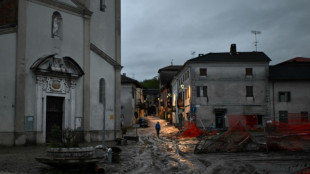
-
 Spurs' Popovich reportedly home and well after 'medical incident'
Spurs' Popovich reportedly home and well after 'medical incident'
-
Trump goes to war with the Fed
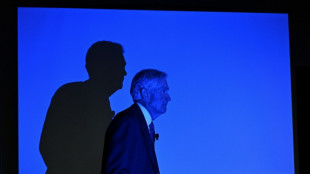
-
 Celtics chase second straight NBA title in playoff field led by Thunder, Cavs
Celtics chase second straight NBA title in playoff field led by Thunder, Cavs
-
White House site blames China for Covid-19 'lab leak'

-
 Norris edges Piastri as McLaren top Jeddah practice
Norris edges Piastri as McLaren top Jeddah practice
-
Trump warns US could ditch Ukraine talks if no progress

-
 Judge denies Sean 'Diddy' Combs push to delay trial
Judge denies Sean 'Diddy' Combs push to delay trial
-
80 killed in deadliest US attack on Yemen, Huthis say
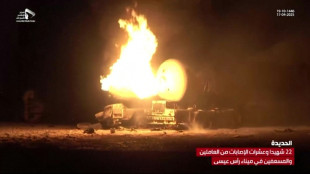
-
 Lebanon says two killed in Israeli strikes in south
Lebanon says two killed in Israeli strikes in south
-
Trump says US will soon 'take a pass' if no Ukraine deal

-
 F1 success is 'like cooking' - Ferrari head chef Vasseur
F1 success is 'like cooking' - Ferrari head chef Vasseur
-
Cycling mulls slowing bikes to make road racing safer

-
 Macron invites foreign researchers to 'choose France'
Macron invites foreign researchers to 'choose France'
-
Klopp 'happy' in new job despite Real Madrid rumours: agent

-
 Alcaraz into Barcelona semis as defending champion Ruud exits
Alcaraz into Barcelona semis as defending champion Ruud exits
-
Vance meets Italy's Meloni before Easter at the Vatican

-
 Evenepoel returns with victory in Brabantse Pijl
Evenepoel returns with victory in Brabantse Pijl
-
Maresca confident he will survive Chelsea slump

-
 Mob beats to death man from persecuted Pakistan minority
Mob beats to death man from persecuted Pakistan minority
-
Lebanon says one killed in Israeli strike near Sidon

-
 Arsenal's Havertz could return for Champions League final
Arsenal's Havertz could return for Champions League final
-
US officials split on Ukraine truce prospects

-
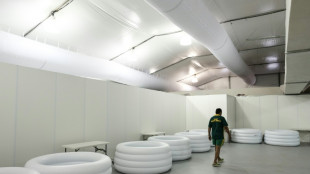 Client brain-dead after Paris cryotherapy session goes wrong
Client brain-dead after Paris cryotherapy session goes wrong
-
Flick demands answers from La Liga for 'joke' schedule

-
 'Maddest game' sums up Man Utd career for Maguire
'Maddest game' sums up Man Utd career for Maguire
-
Trial opens for students, journalists over Istanbul protests

-
 Gaza rescuers say Israeli strikes kill 24 after Hamas rejects truce proposal
Gaza rescuers say Israeli strikes kill 24 after Hamas rejects truce proposal
-
'Really stuck': Ukraine's EU accession drive stumbles

-
 'Not the time to discuss future', says Alonso amid Real Madrid links
'Not the time to discuss future', says Alonso amid Real Madrid links
-
74 killed in deadliest US attack on Yemen, Huthis say
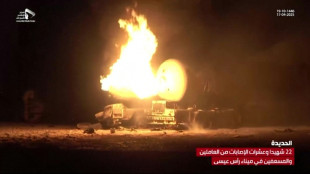
-
 Southgate's ex-assistant Holland fired by Japan's Yokohama
Southgate's ex-assistant Holland fired by Japan's Yokohama
-
Vance meets Meloni in Rome before Easter at the Vatican

-
 Ryan Gosling to star in new 'Star Wars' film
Ryan Gosling to star in new 'Star Wars' film
-
Hamas calls for pressure to end Israel's aid block on Gaza

-
 Russia says Ukraine energy truce over, US mulls peace talks exit
Russia says Ukraine energy truce over, US mulls peace talks exit
-
58 killed in deadliest US strike on Yemen, Huthis say

-
 Museums rethink how the Holocaust should be shown
Museums rethink how the Holocaust should be shown
-
Three dead after deadly spring storm wreaks havoc in the Alps
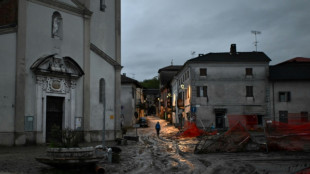
-
 No need for big changes at Liverpool, says Slot
No need for big changes at Liverpool, says Slot
-
Bloody Philippine passion play sees final performance of veteran 'Jesus'


Unfinished deepsea observatory spots highest-energy neutrino ever
A neutrino with 30 times more energy than any previously seen on Earth was detected by an unfinished observatory at the bottom of the Mediterranean Sea after travelling from beyond this galaxy, scientists said Wednesday.
Neutrinos are the second most abundant particle in the universe. Known as ghost particles, they have no electric charge, almost no mass and effortlessly pass through most matter -- such as our world or bodies -- without anyone noticing.
The most violently explosive events in the universe -- such as a star going supernova, two neutron stars smashing into each other or the almighty suck of supermassive black holes -- create what is called ultra-high-energy neutrinos.
Because these particles interact so little with matter, they glide easily away from the violence that created them, travelling in a straight line across the universe.
When they finally arrive at Earth, neutrinos serve as "special cosmic messengers" offering a glimpse into the far reaches of the cosmos that is otherwise hidden from our view, Italian researcher Rosa Coniglione said in a statement.
However, these ghost particles are extremely difficult to detect. One way is by using water.
When light passes through water, it slows down. This sometimes allows quick-moving particles to overtake light -- while still not going faster than the speed of light.
When this happens, it creates a bluish glow called "Cherenkov light" that can be detected by extraordinarily sensitive sensors.
But to observe this light requires a huge amount of water -- at least one cubic kilometre, the equivalent of 400,000 Olympic swimming pools.
That is why the Cubic Kilometre Neutrino Telescope, or KM3NeT, lies at the bottom of the Mediterranean.
- Think of a ping pong ball -
The European-led facility is still under construction, and spread over two sites. Its ARCA detector, which is interested in astronomy, is nearly 3,500 metres (2.2 miles) underwater off the coast of Sicily.
The neutrino-hunting ORCA detector is in the depths near the French city of Toulon.
Cables hundreds of metres long equipped with photomultipliers -- which amplify miniscule amounts of light -- have been anchored to the seabed nearby. Eventually 200,000 photomultipliers will be arrayed in the abyss.
But the ARCA detector was operating at just a tenth of what will be its eventual power when it spotted something strange on February 13, 2023, according to new research published in the journal Nature.
A muon, which is a heavy electron produced by a neutrino, "crossed the entire detector, inducing signals in more than one-third of the active sensors," according to a statement from KM3NeT, which brings together 350 scientists from institutions in 21 countries.
The neutrino had an estimated energy of 220 petaelectronvolts -- or 220 million billion electron volts.
A neutrino with such a massive amount of energy had never before been observed on Earth.
"It is roughly the energy of a ping pong ball falling from one metre height," Dutch physicist and KM3NeT researcher Aart Heijboer told a press conference.
"But the amazing thing is that all this energy is contained in one single elementary" particle, he added.
For humans to create such a particle would require building the equivalent of a Large Hadron Collider "all around the Earth at the distance of the geostationary satellites", said French physicist Paschal Coyle.
- Blazars as source? -
With this kind of energy, the event that created this neutrino must have been beyond Milky Way.
The exact distance remains unknown, "but what we are quite sure is that it's not coming from our galaxy", said French physicist Damien Dornic.
The astrophysicists have some theories about what could have caused such a neutrino. Among the suspects are 12 blazars -- the incredibly bright cores of galaxies with supermassive black holes.
But more research is needed.
"At the time this event happened, our neutrino alert system was still in development," Heijboer emphasised.
If another neutrino is detected near the end of this year, an alert will be sent in seconds to "all the telescopes around the world so that they can point in that direction" to try to spot the source, he said.
P.Vogel--VB

